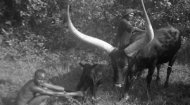
|
Ntungamo Guide |
Ntungamo Guide |
Ntungamo Guide | Ntungamo Guide |
The world's only novel set in and around Ntungamo exploring friendships and cultural differences.
More >

|
Ntungamo is a bustling, pulsating town with scores of shops, boda boda motorcyclists weaving in and out of the shoppers and traders touting for business, music blasting from every corner and its fair share of arguments, raised voices, laughter, power cuts, litter and often under-repaired housing in the town centre itself. The central market in Ntungamo is the beating heart of the town, a vibrant, noisy hub where local produce, crafts, and goods change hands from dawn till dusk, defining the rhythm of the town's social structure. For those venturing beyond the marketplace, Ntungamo offers several surprising tourist attractions, mostly based on its stunning natural geography and its proximity to major conservation areas. While the town itself is industrial and bustling, the surrounding hills provide spectacular panoramic views ideal for hiking and photography. Furthermore, Ntungamo serves as a perfect stopover point or base for exploring nearby protected areas, most notably Lake Mburo National Park, famous for its zebras and thriving birdlife, which lies a relatively short distance away. Local historical sites, monuments, and cultural centres celebrating the region’s heritage also attract the culturally inclined visitor looking for a deeper understanding of the Banyankole people. Accommodation options within the district cater primarily to business travellers and mid-range tourists, offering a comfortable blend of convenience and local hospitality. Types of accommodation range from basic, clean guesthouses and budget hotels, which provide excellent value for money, to several established mid-tier lodges located closer to the outskirts, offering enhanced services like conference facilities and organised transport. While luxury five-star resorts are rare, the available establishments pride themselves on securing a quiet, secure base from which to explore the region, ensuring that visitors feel connected to the local atmosphere without sacrificing comfort or essential amenities. Ntungamo is also associated with several particularly interesting facts that add flavour to its profile. The district holds immense political significance in contemporary Uganda, being the birthplace or ancestral home of several prominent national leaders, earning it the nickname related to its influential legacy. Geographically, it is known for its dramatic topography, showcasing the classic, deeply eroded hills characteristic of Southwestern Uganda, which make for challenging yet rewarding travel. Moreover, the local cuisine is exceptional, centred around fresh, locally grown produce; a visit is incomplete without sampling the genuine, perfectly cooked Matooke and the richly flavoured traditional stews served in local eateries, reflecting the district’s undisputed agricultural wealth. For more about life in Ntungamo and its surrounding villages, check out The Lighthouse Project novel below. In this Ntungamo travel guide, we hope to provide all you need to know about the town. However, if you know of other tourist attractions in Ntungamo, please get in touch and let us know using our contact form. |












